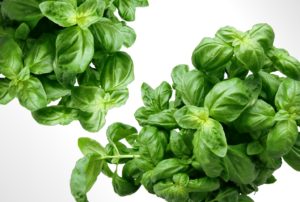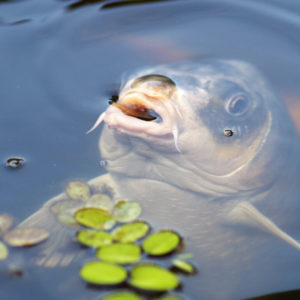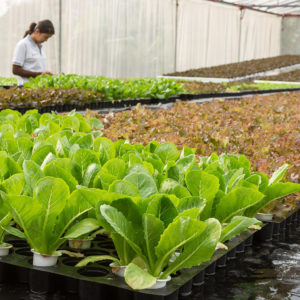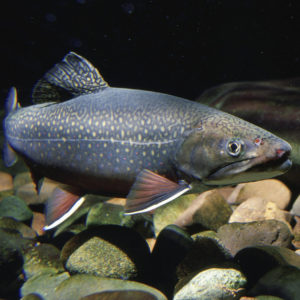Fish for Aquaponics (Intermediate)
If you’re just starting out your aquaponic system, you’ll want to read our guide on the easiest fish for aquaponics. However, if you’ve gotten past a harvest or two and you’re ready for more of a challenge, this guide is for you. The fish we recommend in this guide are still ideal for aquaponics, they just require a little more work. Sometimes this is because they have strict environmental requirements, or because they have demanding dietary needs. In other cases, their more aggressive demeanor can make them more difficult to manage.
In either case, these fish require more work, but it’s worth it.
Barramundi
Barramundi are great for eating, full of Omega fatty acids, and they grow quickly too. Some barramundi can even reach plate size within 6 months. However, even the ‘slower’ growers are typically ready to eat within 12 months. Their flaky white meat makes them especially appealing for eating. They do best with warmer temperatures ranging from 77℉ to 86℉, with pH levels between 6.5 and 7.2. Their limited tolerance for lower and higher pH levels can make it more difficult to make their environments.
Barramundi also need higher levels of dissolved oxygen, which means you’ll likely need to add extra oxygen to your tank. This is easiest if you use air stones to raise dissolved oxygen in the water.
Another reason these fish aren’t recommended for beginners is because of their more aggressive temperament. Even among the same species, larger fish are known to attack and feed on the smaller ones. If you plan on breeding barramundi, or growing juveniles while the other fish mature, you’ll need a way to keep them separate.
Largemouth Bass
Largemouth bass are hardy, cool water fish, although they don’t like bright lights. One reason people choose to grow these fish in aquaponics is how large they can grow (up to 12 pounds or more). Not only that, it doesn’t take them long to do so. In fact, they can reach 12 pounds in as little as 16 months!
Largemouth bass do well in temperatures between 70℉ to 86℉, although they grow well in colder waters too. If you plan on growing outdoors or in a pond, largemouth bass are an excellent choice. In fact, most people suggest growing them in a tank no smaller than 1,200 gallons. Try to keep pH levels between 6.5 to 8.5.
These fish are mostly carnivorous, and can require more work to feed. Largemouth bass do best with a diet of shrimp and insects to begin with, and then prefer to move onto food like crayfish or snails. Likewise, they won’t often retrieve food that sinks to the bottom of the tank. Because of this, you need to provide food that will stay afloat for some time.
Bluegill
Bluegill are popular in aquaponics, although they do grow more slowly, and take some more work to manage. One of the harder things to manage is their diet: bluegill need a lot of protein in their diet compared to other species. They often eat smaller fish, invertebrates, and even shrimp.
As you might assume, because they eat smaller fish, keeping larger fish from eating juveniles can be a struggle. Because bluegill also readily breed in even small tanks, they require more oversight, and you’ll likely need to set up separate tanks for juveniles.
Bluegill do best in temperatures between 65℉ to 80℉, although they can tolerate temperatures as low as 55℉. However, it’s worth mentioning that bluegill are slow growers, and often take as long as two years to reach plate size.
Murray Cod
Murray cod have some features that make them fairly easy to grow, and some that make them quite a bit harder. For example, they can tolerate an extensive range of temperatures from 46℉ to 76℉, and tolerate a typical pH range of 7 to 8. On the other hand, they’re also more susceptible to disease and infection, which means you’ll have to monitor them frequently and put a lot of care into maintaining your tank.
These aren’t fish that you can stock with any other species, although you can often keep them with perch. With that said, you also need to take measures to keep them from attacking other fish. Murray cod won’t attack often provided that they’re very well fed, and kept away from smaller fish. If they aren’t fed enough, they’ll attack other fish in the tank, and even each other. How small is too small? If other fish look like they’ll fit in its mouth, Murray cod may attempt to eat them.
Murray cod need a lot of protein in their diet, although if fed properly, they can reach maturity in 12 to 18 months. Because of their susceptibility to illness, and need for proper feeding and stocking, they’re recommended for growers with a little more experience.
Crayfish, Prawns, Shrimp
If you thought aquaponics was only about ‘fish’ then guess again. Crustaceans are also popular choices for aquaponics, and they’re just as popular to eat. Most of these critters can handle temperatures between 57℉ to around 84℉, although this will variety depending on which you plan on growing. Typical pH ranges are from 6.5 to 8. However, it’s important to maintain consistent temperatures, because fluctuating temperatures can stress and even kill them.
These creatures might not be the first thing you think about when you’re stocking your aquaponics tank. However, they do bring the tank several benefits. One of the biggest reasons to consider stocking them (aside from enjoying eating them), is that they help keep your tank clean. That’s because they have no qualms eating dead matter and sunken food. They also provide good fertilizer for the plants you grow in your system.
Another benefit for stocking these is that they’re ideal candidates for stocking with other (appropriate fish species). Just makes sure that you’re keeping them with herbivores, or fish that are unlikely to eat their smaller tank mates. This benefit is the same thing that can be a challenge. Unfortunately for these little crustaceans, they also make great food for other fish. So, if you want to make sure you raise them to harvest, you’ll need to make good choices when you stock your tank.



